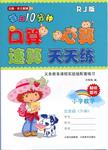题目内容
5.How quickly can you count from one to ten?Do you use ten different words to do it?Can you do it in English,or do you have to use your first languages?Do you count on your fingers?Many people think that numbers and math are the same all over the world.But scientists have discovered that it is not true.People in different parts of the world use different ways to count on their fingers.In the United States,people think begin counting with their first fingers,which they extend or stick out.They then extend the rest of their fingers and finally the thumb(拇指)to count to five.Then they repeat this with the other hand to get to ten.In China,people count by using different finger positions.In this way,a Chinese person can easily count to ten on only one hand.
Besides ways of finger counting,scientists have found that cultures and languages are also different when it comes to numbers.Some languages have only a few words for numbers,and others have no words for numbers.A group of scientists studied aboriginal(土著的)people in Australia.These people don't have hand movements to stand for numbers.They don't even have word for numbers.However,they are still able to understand different ideas about numbers.
In a similar study,researchers from the Massachusetts Institute of Technology discovered that people of the Piraha tribe(部落) in northwestern Brazil don't have words for numbers such as"one"or"three.".They are not able to say"five trees"or"ten trees"but can say"some trees,""more trees,"or"many trees."Professor Edward Gibson said that most people believe that everyone knows how to count,"but here is a group that does not count.They could learn,but is't not useful in their culture,so they've never picked it up."
Although all humans are able to understand quantities(数量),not all languages have numbers and not all people use counting.Number words in a certain language are a result of people needing numbers in their daily lives.Now we know that people have different ideas about numbers and math,too.
51.The writer begins with the four questions in order toB.
A.make a survey B.interest readers
B.tell a story D.solve math problems
52.What do we learn from the difference in finger counting between the U.S.and China?C
A.People from China count much faster than people from the U.S.
B.People from China need two hands to count from one to ten.
C.People of different cultures may use different ways of finger counting
D.People of different cultures use the same way of finger counting.
53.Which of following is true about aboriginal Australians?D
A.They have only a few words for numbers
B.They have hand movements to stand for numbers
C.They can only count to five on their fingers
D.They can understand different ideas about numbers
54.The study of the Piraha tribe shows thatD
A.people all over the world know how to count
B.People of the tribe have words for number
C.Some groups of people are not smart enough to count
D.Counting is not useful in the culture of the tribe
55.What is the main idea of the passage?A
A.people from different cultures have different ideas about numbers and math
B.Chinese people can count more easily on their fingers than Americans
C.In some aboriginal culture,people don't even know how to count
D.Some languages don't have number words because people don't need numbers.
分析 短文大意:这篇短文中作者给我们介绍的是关于数字和数学,不同的文化有不同的观点.不同文化的国家里,人们数数的方式是不同的,有些国家里根本没有表示数字的单词,他们不用数字来数数,但是他们同样理解关于数字的想法,故数字和数学并不是一回事.
你能多快地从一数到十?你用十个不同的单词来数吗?你能用英语来数吗,还是要用你的母语来数?你用你的手指来数吗?全世界的人都认为数字和数学是一回事.但是科学家已经发现那不正确.
世界不同地方的人有不同的方式在手上数数.在美国,人们一开始用他们的伸出第一个手指来计数.他们用手指包括拇指(拇指)数到五.然后用另一只手重复数数数到十.在中国,人们用手指的不同位置计数.这样,一个中国人用一只手可以轻松地数到十.
除了手指计数的方式,科学家发现,当它涉及到数字的时候,文化和语言也不同.有些语言只有几个数字单词,有些没有数字单词.一组科学家研究了澳大利亚原住民.这些人不用手的动作来代表数字,他们甚至没有数字单词,但他们仍然能够理解不同的数字.
在类似的研究中,来自麻省理工学院的研究人员在巴西西北部发现了没有如"一"或"三"的数字单词.他们不能说"五棵树"或"十棵树",但可以说"有些树","更多树","或"许多树.".爱德华教授吉普森说大多数人相信每个人都知道怎么算,"但这是一组不用计算的人.他们可以学习,但在他们的文化没有用,所以他们从来没有把它当做一回事."
虽然所有的人都能数数,不是所有的语言都有数字,不是所有的人都使用数字计数.在特定语言中的数字词语是人们日常生活中需要的结果.现在我们知道,人们对数字和数学态度有不同的想法.
解答 51.D 推理判断题.根据How quickly can you count from one to ten?Do you use ten different words to do it?Can you do it in English,or do you have to use your first languages?Do you count on your fingers?可知,作者用这些问题开头的目的是一下子吸引读者的注意力,让读者对接下来作者要说的事情产生兴趣.故选B.
52.C 细节理解题.根据People in different parts of the world use different ways to count on their fingers.可知,作者想告诉我们不同文化的国家,使用不同的手指数数的方式,故选C.
53.D 细节理解题.根据However,they are still able to understand different ideas about numbers可知选项C是不正确的;根据They don't even have word for numbers.可知A是不对的;根据These people don't have hand movements to stand for numbers可知B是不对的;根据A group of scientists studied aboriginal(土著的)people in Australia.These people don't have hand movements to stand for numbers.They don't even have word for numbers.However,they are still able to understand different ideas about numbers.可知,澳大利亚的土著居民没有表示数字的单词,也没有动作来代表数字,但是他们仍然能理解关于数字的不同的想法.故选D.
54.D 细节理解题.根据They could learn,but it's not useful in their culture,so they've never picked it up.可知,他们可以学数数,但是在他们的文化里,那是没用的,所以他们也不学.故选D.
55.A 主旨大意题.根据People in different parts of the world use different ways to count on their fingers;Besides ways of finger counting,scientists have found that cultures and languages are also different when it comes to numbers;Although all humans are able to understand quantities(数量),not all languages have numbers and not all people use counting.可知这篇短文中作者给我们介绍的是关于数字和数学,不同的文化有不同的观点.不同文化的国家里,人们数数的方式是不同的,有些国家里根本没有表示数字的单词,他们不用数字来数数,但是他们同样理解关于数字的想法,故数字和数学并不是一回事.故选A.
点评 这篇短文中作者给我们介绍的是关于数字和数学的故事.在阅读时,应观察全文的结构安排,理解文章浓墨重笔写的"重心",考虑文章组织材料及支撑性细节是服务于什么的,分析故事的发展结局都是围绕什么中心大意来安排的. 这样才会有的放矢的去解答所给题目.

 每日10分钟口算心算速算天天练系列答案
每日10分钟口算心算速算天天练系列答案--Don't worry.Let me help you.( )
| A. | fun | B. | trouble | C. | experience |
| A. | million of | B. | millions of | C. | two millions of |
-She __________ to the library.( )
| A. | goes | B. | had gone | C. | has gone | D. | would go |